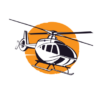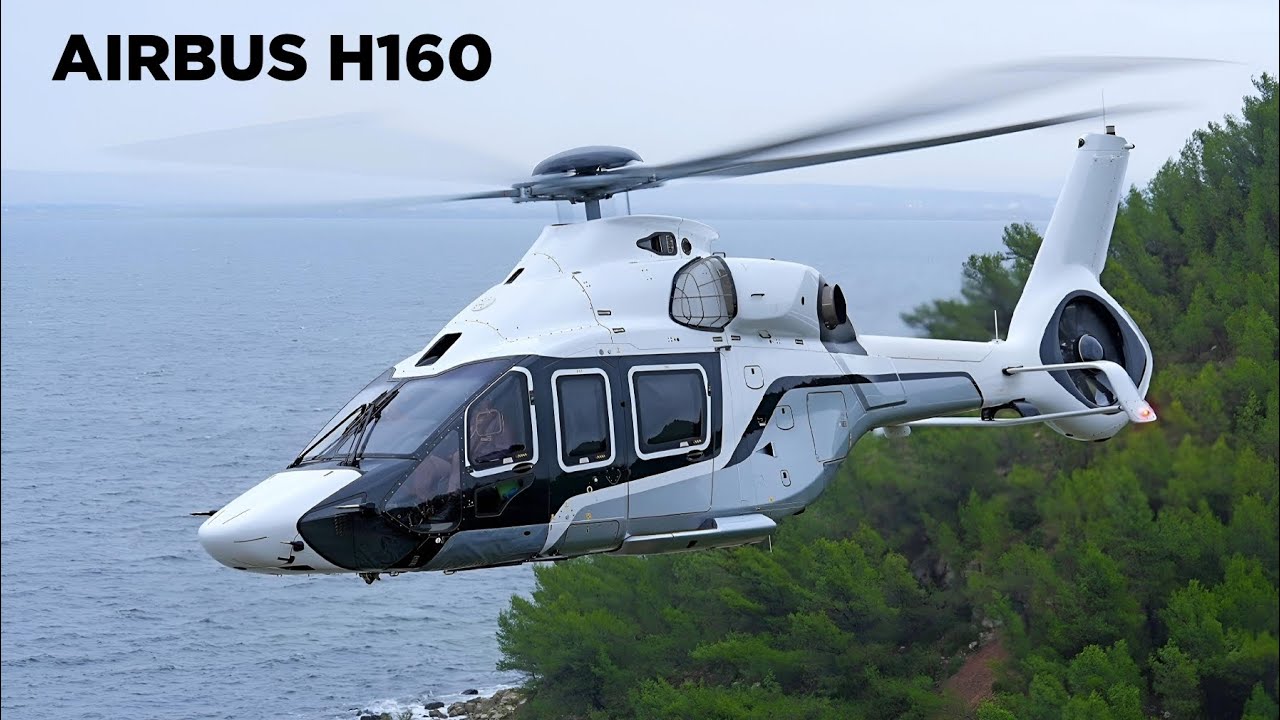Introduction to the Kamov Ka-50 Black Shark
The Kamov Ka-50 Black Shark is a remarkable attack helicopter that has captured the attention of aviation enthusiasts and military experts alike. Developed by the Russian manufacturer Kamov, this single-seat rotorcraft stands out due to its unique coaxial rotor system, which eliminates the need for a tail rotor. This design innovation not only enhances the helicopter’s maneuverability but also contributes to its distinctive silhouette. Known for its impressive agility and combat capabilities, the Ka-50 Black Shark has become a symbol of modern military aviation technology.
Introduced in the early 1990s, the Kamov Ka-50 was designed to meet the demands of modern warfare, offering advanced avionics and weapon systems. Its powerful armament includes a 30mm cannon, anti-tank guided missiles, and rockets, making it a formidable force on the battlefield. The helicopter’s cockpit is equipped with state-of-the-art navigation and targeting systems, providing pilots with the tools necessary for precision strikes in various combat scenarios. This blend of firepower and technology ensures that the Ka-50 remains a formidable opponent in any theater of war.
The Ka-50’s development was a response to the evolving needs of the Russian military, seeking a versatile and highly capable attack helicopter. Its coaxial rotor design not only enhances its aerodynamic efficiency but also allows for a more compact airframe, facilitating operations in confined spaces. This characteristic makes the Black Shark particularly suited for missions requiring stealth and precision. With its cutting-edge design and robust performance, the Kamov Ka-50 Black Shark continues to be a subject of study and admiration in the field of aviation engineering.
Design and Development of the Kamov Ka-50 Black Shark
The Kamov Ka-50 Black Shark is a testament to innovative engineering and strategic foresight in rotary-wing aircraft design. The development of this unique attack helicopter began in the late 1970s, as the Soviet Union sought a new generation of military helicopters that could deliver superior performance and versatility on the battlefield. The Ka-50’s design was spearheaded by the Kamov Design Bureau, known for its pioneering coaxial rotor systems, which set it apart from traditional helicopter designs. This coaxial rotor configuration, featuring two counter-rotating rotors, eliminates the need for a tail rotor, thus reducing the aircraft’s size and enhancing its maneuverability.
In the design phase, emphasis was placed on achieving a high level of agility and speed, crucial for evasive maneuvers and rapid deployment in combat situations. The Kamov Ka-50’s streamlined fuselage and powerful turboshaft engine allow it to reach speeds that are uncommon for helicopters of its class. The aircraft is equipped with advanced avionics and a sophisticated weapons system, enabling it to perform both reconnaissance and attack roles effectively. The integration of a single-pilot cockpit was a bold decision, supported by an automated flight control system that reduces pilot workload and increases operational efficiency.
During the development process, extensive testing and evaluation were conducted to refine the helicopter’s capabilities and ensure its reliability under various combat scenarios. The Ka-50’s robust airframe and armor protection provide resilience against small arms fire and shrapnel, enhancing its survivability in hostile environments. Its weaponry, including a 30mm cannon and a variety of missile options, allows for versatile engagement strategies against both ground and aerial targets. The Kamov Ka-50’s development journey reflects a blend of cutting-edge technology and tactical innovation, positioning it as a formidable asset in modern military aviation.
Technical Specifications of the Kamov Ka-50 Black Shark
The Kamov Ka-50 Black Shark, also known by its NATO reporting name “Hokum A,” is a single-seat attack helicopter renowned for its unique coaxial rotor system, which eliminates the need for a tail rotor. This design not only enhances maneuverability but also contributes to a more compact aircraft profile. Powered by two Klimov TV3-117VK turboshaft engines, the Ka-50 can achieve a maximum speed of approximately 310 km/h (193 mph) and has a range of around 545 km (338 miles) without external fuel tanks. This combination of speed and range makes it a formidable presence in the battlefield.
The helicopter’s dimensions include a length of 16 meters (52 feet) with rotors turning and a height of 4.93 meters (16.2 feet). The rotor diameter spans 14.5 meters (47.6 feet), providing the necessary lift and stability during various flight maneuvers. The Ka-50’s maximum takeoff weight is approximately 10,800 kg (23,810 lbs), allowing it to carry an impressive payload of weaponry and equipment.
In terms of armament, the Kamov Ka-50 is equipped with a 30 mm 2A42 cannon, capable of firing at a rate of 300 to 800 rounds per minute. It also boasts a variety of hardpoints for carrying additional weaponry, such as anti-tank guided missiles, rockets, and bombs, making it versatile for multiple combat scenarios. The advanced avionics and targeting systems, including a helmet-mounted sight and a laser rangefinder, enhance its precision and effectiveness in engaging targets.
Avionics and electronic warfare systems play a crucial role in the Ka-50’s operational capabilities. The helicopter is equipped with a comprehensive suite of navigation and targeting systems, including a radar warning receiver, electronic countermeasures, and an infrared jammer. These systems not only aid in navigation and target acquisition but also enhance the helicopter’s survivability by reducing its vulnerability to enemy radar and missile systems. The integration of these technologies ensures that the Ka-50 remains a cutting-edge platform in modern aerial warfare.
The Role of the Kamov Ka-50 Black Shark in Modern Warfare
The Kamov Ka-50 Black Shark has carved a significant niche for itself in modern warfare with its advanced design and combat capabilities. This Russian single-seat attack helicopter is renowned for its unique coaxial rotor system, which enhances its maneuverability and allows it to execute complex aerial maneuvers. In contemporary military operations, the Ka-50 serves as a critical asset in providing close air support and engaging enemy armored vehicles with precision. Its agility in the battlefield is unmatched, enabling it to perform rapid strikes and retreat swiftly, minimizing exposure to enemy fire.
One of the standout features of the Kamov Ka-50 is its robust weaponry and avionics systems. Equipped with a 30mm cannon, anti-tank guided missiles, and rockets, the Black Shark can engage a variety of targets, from fortified positions to moving armored vehicles. The helicopter’s advanced targeting systems and night vision capabilities ensure that it remains effective in both day and night operations, adapting to the evolving dynamics of the battlefield. Its ability to operate in adverse weather conditions further underscores its reliability and versatility in modern warfare scenarios.
The role of the Ka-50 Black Shark extends beyond mere combat. Its reconnaissance capabilities make it an invaluable tool for gathering intelligence and providing real-time battlefield assessments. The helicopter’s advanced sensors and communication systems allow it to relay critical information to ground forces, enhancing situational awareness and coordination. In an era where information superiority is a decisive factor, the Ka-50 contributes to the strategic advantage of military forces, integrating seamlessly into network-centric warfare environments.
Comparing the Kamov Ka-50 Black Shark with Other Attack Helicopters
The Kamov Ka-50 Black Shark, a distinctive single-seat attack helicopter developed by the Soviet Union, stands out in the realm of military aviation for its unique coaxial rotor system. This design choice eliminates the need for a tail rotor, enhancing the helicopter’s maneuverability and allowing for a more compact design. When compared to other attack helicopters like the AH-64 Apache and the Eurocopter Tiger, the Ka-50’s coaxial rotors provide it with superior agility, making it exceptionally effective in close-quarters combat situations. This agility is a significant advantage in mountainous terrains or urban environments, where quick directional changes are crucial.
In terms of armament, the Ka-50 is equipped with a 30mm 2A42 cannon, anti-tank guided missiles, and unguided rockets, placing it on par with its Western counterparts. The AH-64 Apache, for instance, features a similar 30mm M230 chain gun and a variety of missile options. However, the Ka-50’s unique design allows it to carry a slightly larger payload due to its powerful engines and compact build. This capability gives it an edge in missions that require heavy firepower without compromising speed and maneuverability.
Survivability is another critical aspect when comparing the Ka-50 with other attack helicopters. The Black Shark incorporates advanced armor plating and a robust ejection seat, which is a rare feature in helicopters and significantly increases pilot survivability in emergency situations. While the Mi-28 Havoc and the AH-64 Apache also feature armored cockpits, the ejection seat provides the Ka-50 with a unique safety advantage. Additionally, its smaller radar cross-section, owing to the absence of a tail rotor, makes it harder to detect, offering a tactical advantage in stealth operations.
The Ka-50 also excels in terms of pilot workload, as it is designed to be operated by a single pilot. This contrasts with helicopters like the AH-64 Apache, which require a two-person crew. The Ka-50’s advanced avionics and automated systems reduce the pilot’s burden, allowing for more focus on mission objectives and tactical decisions. This feature not only simplifies operations but also reduces personnel requirements and training costs, making it a cost-effective option for military forces.



